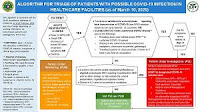The good news: Forty-three states and D.C. enacted COVID-era moratoriums on foreclosures and evictions. The federal government enacted its own moratorium.
The really bad news: The federal moratorium expired on Friday, July 31. All but nine states' moratoriums will expire by the end of October.
If the connection between having a home and health seems a little fuzzy, these four paragraphs are key (emphasis added):
"Just as the economic fallout of COVID-19 has increased the likelihood of evictions, evictions might also increase the risk of COVID-19 transmission in the short term. Households may be rendered homeless by eviction or will need to double up in shared space, resulting in diminished ability to socially distance and increased risk of COVID-19 transmission."However, the immediate health effects of eviction extend far beyond COVID-19 risk. For individuals and families who become homeless, especially those who become chronically homeless, the health risks have long been recognized. Mounting evidence suggests that psychosocial stress and material scarcity following an eviction may carry profound and lasting health consequences. Among adults, evictions have been associated with several interrelated conditions, including all-cause mortality, emergency department utilization, sexually transmitted infections, HIV-related treatment outcomes, drug use, exposure to violence, mental health hospitalization, suicides, and depression. Health conditions and high levels of health care costs also increase vulnerability to evictions in a manner that can perpetuate a longstanding cyclical pattern of economic and housing instability and poor health."For children, experiencing evictions during the COVID-19 pandemic may cast a long shadow, impacting their health and well-being as adults. Children whose mothers experience evictions during pregnancy are more likely to be born with low birthweight or preterm than are children whose mothers are not evicted. In early childhood, evictions are associated with food insecurity and lead poisoning, which over time can compound and cause lasting deficiencies in children’s physical, mental, and emotional development."Evictions during COVID-19 are also likely to perpetuate and worsen racial health inequities at both individual and community levels. Structural racism drives inequities in labor and housing markets, resulting in increased risk of both COVID-19 and eviction for Black and Latinx individuals. Black and Latinx individuals are also more likely to live in communities characterized by high levels of eviction with important spillover effects on health."



































